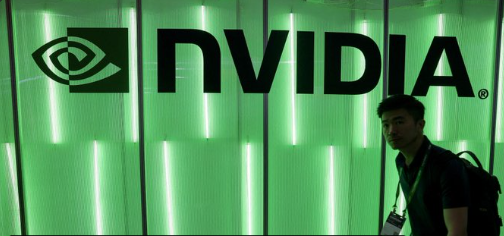The company is on pace to become the most valuable company on Earth.
On Monday, Nvidia (NVDA) shares began trading on a new 10-for-1 split basis, reducing the share price from the previous closing of $1,208.88 to $120.88. This adjustment comes after the split was enacted, which awarded shareholders ten shares for every one they held before the split. For instance, a shareholder who owned four shares of Nvidia as of last Thursday now holds 40 shares.
Nvidia’s 10-for1 stock split has gone into effect.
Vijay Rakesh of Mizuho Securities says this is good for retail investors and he raised his price target on the stock to $127 https://t.co/Te23PRjzwK pic.twitter.com/J8uAhz4Gxb
— Bloomberg TV (@BloombergTV) June 10, 2024
The purpose of stock splits is to make share ownership more accessible by lowering the price per share, which can attract a broader base of investors without diminishing the value of existing shareholders’ investments. Matt Amberson from Option Research & Technology Services highlighted the significance of this move for Nvidia, particularly for retail traders and options traders, due to the reduced share and option prices making the stock more attainable.
Nvidia’s decision to split its stock follows a significant milestone where its total market valuation briefly surpassed $3 trillion, overtaking Apple as the second-most valuable publicly traded U.S. company. This surge in value is largely attributed to the heightened demand for Nvidia’s hardware driven by the burgeoning interest in generative AI technologies, a sector that gained substantial attention after OpenAI launched its ChatGPT software in late 2022. Major tech companies like Amazon (AMZN), Google (GOOG, GOOGL), and Microsoft (MSFT) have been aggressively seeking Nvidia’s powerful processors to enhance their own AI capabilities.
This increased demand has significantly boosted Nvidia’s financial performance. In the first quarter, the company reported a dramatic increase in earnings and revenue, with adjusted earnings per share up 461% and revenue up 262% year over year. The Data Center segment, in particular, saw a staggering 427% increase in revenue from the previous year, contributing 86% of the total quarterly revenue, overshadowing the gaming segment which brought in $2.6 billion.
Vivek Arya, Bank of America Securities senior semiconductors analyst, on if investors should buy Nvidia’s stock at today’s levels. https://t.co/NY5IIiNJHp pic.twitter.com/XMR9ckcYSD
— CNBC (@CNBC) June 10, 2024
Looking forward, Nvidia continues to innovate with new products on the horizon. CEO Jensen Huang recently announced upcoming enhancements to their AI platforms, including the Blackwell Ultra set for release in 2025 and a completely new platform named Rubin slated for 2026, with an upgraded version expected in 2027.
Historically, stock splits are often seen as indicators of a company’s strength, with split stocks typically outperforming the S&P 500 in the subsequent year. According to Bank of America, stocks have on average risen 25% in the year following a split, compared to a 12% average return for the S&P 500. This pattern has held true across various market conditions, including during the tech bubble period from 2000 to 2009. Since announcing its split on May 22, Nvidia’s shares have already seen approximately a 27% increase.
As Nvidia cements its position as a leader in AI technology, competitors such as AMD (AMD) and Intel (INTC) are also advancing their AI hardware capabilities and laying out their product roadmaps to challenge Nvidia’s dominance. Additionally, major companies across the tech and automotive sectors, like Meta (META) and Tesla (TSLA), are increasingly dependent on Nvidia’s technology for developing AI-driven applications ranging from recommendation engines to autonomous driving systems.
Sometimes a stock flies so high that its price becomes out of reach for the average investor. Nvidia is the latest example — its stock split has taken effect. @krisaqnews explains what that means https://t.co/SEEyQGgCvw pic.twitter.com/bkA5Oe8NjD
— Bloomberg Markets (@markets) June 10, 2024
Moreover, Nvidia anticipates further growth opportunities beyond just the tech sector, with potential expansions into markets involving government entities, research institutions, and more, suggesting a promising future trajectory for the company.
Major Points:
- Nvidia shares started trading on a new 10-for-1 split basis, reducing the stock price from $1,208.88 to $120.88 to make the shares more accessible to investors.
- The stock split reflects Nvidia’s significant market growth, briefly surpassing a $3 trillion valuation and becoming the second-most valuable publicly traded U.S. company.
- Nvidia’s financial surge is driven by high demand for its AI hardware from major tech companies like Amazon, Google, and Microsoft, following the rise of generative AI.
- Upcoming product releases include the Blackwell Ultra AI platform in 2025 and the new Rubin platform in 2026, with continuous innovation expected to maintain customer interest.
- Competition is increasing as companies like AMD and Intel develop their AI technologies, but Nvidia also sees potential for expansion beyond the tech industry into government and research sectors.
Susan Guglielmo – Reprinted with permission of Whatfinger News



